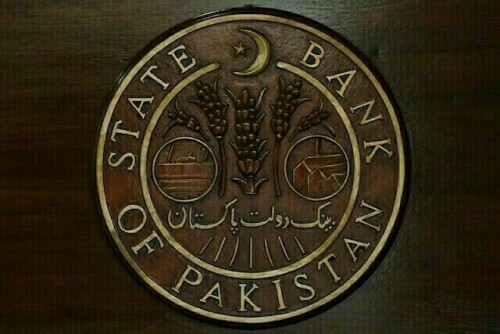Central Bank Expected to Maintain Policy Rate Amid Global Uncertainties
According to a recent poll, the State Bank of Pakistan (SBP) is widely anticipated to maintain its policy rate in the upcoming Monetary Policy Committee (MPC) announcement. This decision comes as many analysts have adjusted their forecasts, moving away from previous expectations of a rate cut, primarily due to escalating geopolitical tensions stemming from the conflict in the Middle East. The concerns revolve around potential inflationary pressures arising from increased global commodity prices.
Following recent hostilities, anxieties have surfaced regarding a broader regional conflict. These escalating tensions have led to a surge in crude oil prices, which poses a significant challenge for Pakistan, considering the extensive impact on imported inflation due to potential supply constraints and prolonged instability.
The snap poll revealed that out of 14 respondents, 11 foresee the SBP maintaining the benchmark rate at its current level of 22%. Conversely, two participants anticipate a 100-basis-point reduction, while one projects a 50-basis-point decrease.
Ahmad Mobeen, a senior economist at S&P Global Market Intelligence, noted, “Heightened geopolitical tensions present an upside risk concerning a potential surge in worldwide commodity prices, which could reinstate inflationary pressures. Consequently, a higher import bill could jeopardize external sector performance and exert pressure on the exchange rate.”
After peaking at approximately 40% in May 2023, inflation in Pakistan has been on a downward trajectory for several months. However, in the previous month, the inflation rate edged up to 3.5%, surpassing the Ministry of Finance’s projection of up to 2%, influenced in part by diminishing base effects from the prior year. The SBP forecasts an average inflation rate between 5.5% and 7.5% for the fiscal year concluding in June.
In March, the central bank opted to pause its easing cycle following cumulative reductions of 1,000 basis points from a record high of 22%. The easing cycle then resumed with a 100-basis-point reduction during May’s meeting.
The policy review occurs subsequent to the unveiling of the annual budget, which reflected a 20% increase in defense spending, coupled with an overall expenditure reduction of 7%. The GDP growth forecast is projected at 4.2%.
Pakistan asserts that its economy, valued at $350 billion, has achieved stabilization through a $3 billion IMF bailout, which averted a potential default.
Nevertheless, several experts remain doubtful about the government’s capacity to meet the projected growth target amid prevailing fiscal and external hurdles.
Abdul Azeem, the Head of Research at Al Habib Capital Markets, anticipates a 50-bp cut, arguing that a lower rate would “bolster the GDP target of 4.2% while alleviating the burden of debt financing.”



Comments (0)
No comments yet. Be the first to comment!
Leave a Comment